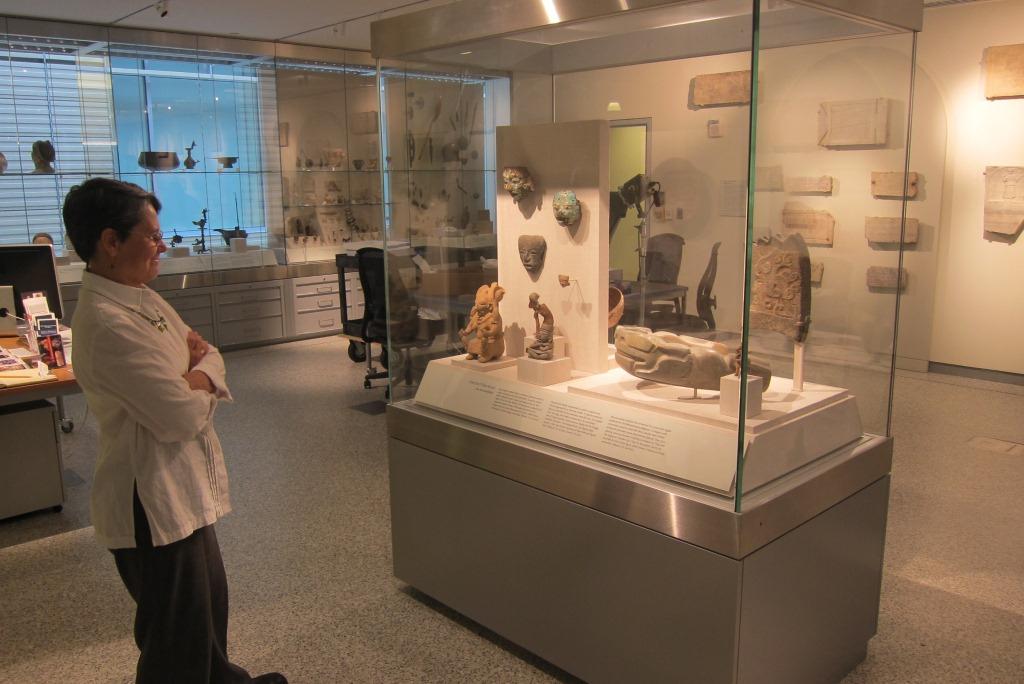
02 Oct Helping Protect your Collection Items from Deterioration
It’s every gallery owner’s priority to make sure that their exhibition is safe from damage. When dealing with precious objects, multiple factors threaten their safety.
Apart from the obvious dangers including fire, flooding, breakage, theft and vandalism; galleries face many additional risks that can cause deterioration of their precious objects. Light, heat, pests, pH levels, and even the very air itself can cause devastating corrosion and decay!
The simplest and best way to look after a collection is to prevent conditions that can cause deterioration in the first place. Whether an object is in a private home, a museum, an art gallery or private display space, the biggest damage-causing culprits remain the same.
Let’s take a quick look at the most significant environmental factors that threaten the integrity and longevity of exhibition pieces, and how to curtail these threats to keep your items safe.
Light-induced deterioration
Light includes light that makes up our visible spectrum (rainbow colours), as well as unseen components such as ultraviolet (UV) and infra-red (IR) light. Light has enormous potential for damaging organic materials, whether in pure form or part of a composite object.
For instance, the bleaching of ivory, fading of pigments, inks and dyes, the discolouration of wood, lacquers and varnishes are all the result of light exposure.
But of all the agents that contribute to the deterioration of materials, light is possibly the easiest to control. The issue is achieving the right balance between minimising photochemical damage while still maintaining appropriate light levels for objects to be viewed in full colour and detail.
- Achieve light control by using appropriate artificial lighting sources such as low UV fluorescent lights, and arranging them to reflect light rather than light objects directly.
Humidity and temperature
The relative humidity (RH) of the air indicates how much water vapour exists at a particular temperature compared with how much water vapour the air can actually hold at that temperature.
Damage caused by temperature changes or exposure to unfavourable relative humidity conditions can be either chemical, physical or biological in nature.
Organic matter such as paper, wood, textiles, bone and ivory expand and contract as they absorb and release water vapour in response to humidity levels.
It’s important to control not just relative humidity levels, but also minimise fluctuations. Large changes often equal rapid fluctuations that can cause cracking and warping of materials, and can also cause bonded materials to separate.
Additionally, constant relative humidity above 70% can encourage the growth of mould and increase corrosion in some materials. In others such as paper and textiles, relative humidity levels below 40% can cause them to become brittle.
- Ensure you use display cases and storage crates that can act as buffer zones and maintain humidity at reasonably constant levels.
Environmental pollutants
Depending on the type of pollutant and the material types, a variety of detrimental effects can be measured on objects including corrosion of metals and degradation of organic materials.
Airborne pollutants such as dust, cigarette smoke, peroxides, and even airborne salt from decaying organic matter can all contribute to devastating damage on artifacts.
Dust in particular can promote both chemical and biological attack on objects. It can be made up of a variety of materials including fine dirt, oil mists, textile fibres, wood powders and more. The precise nature of the dust and where it settles determines its effects.
Damage can include physical abrasion, discolouration, moisture damage, and attracting pests such as insects, mould and bacteria.
- Use showcases such as the Frank system which are virtually airtight without glue or gaskets that can pollute the air within.
As they say, prevention is the best cure. That’s why at POD Services we use a variety of conservation methods to ensure museum and fine art displays are stored, transported and displayed with optimal care.
Our Frank Showcase system has been a great addition to our display solutions, offering conservation-grade protection for displays of all shapes and sizes. Its patented system uses a milled precision profile that makes it far stronger and much more customisable than a traditional glued or screwed system.
To find out more, visit https://podservices.com.au/frank-showcase-system/.



Sorry, the comment form is closed at this time.